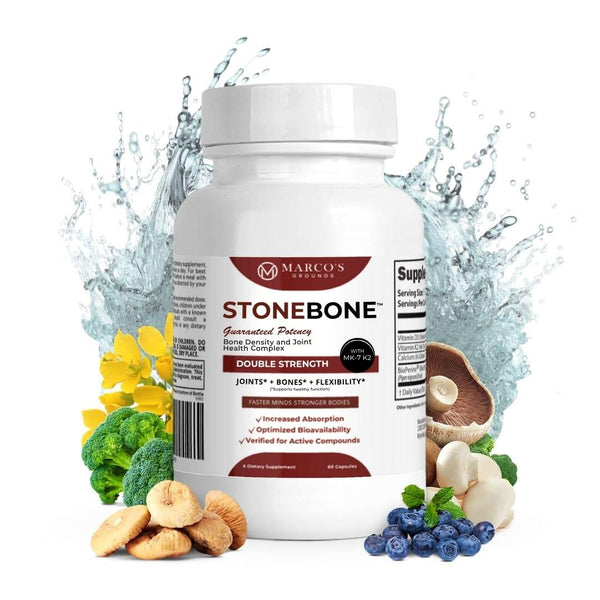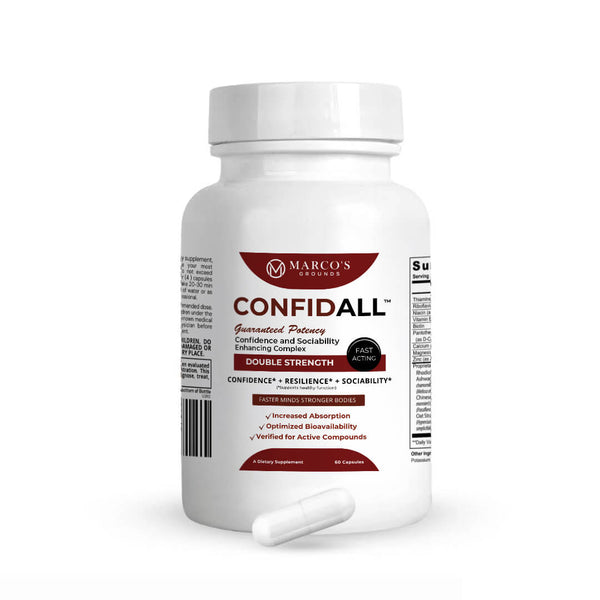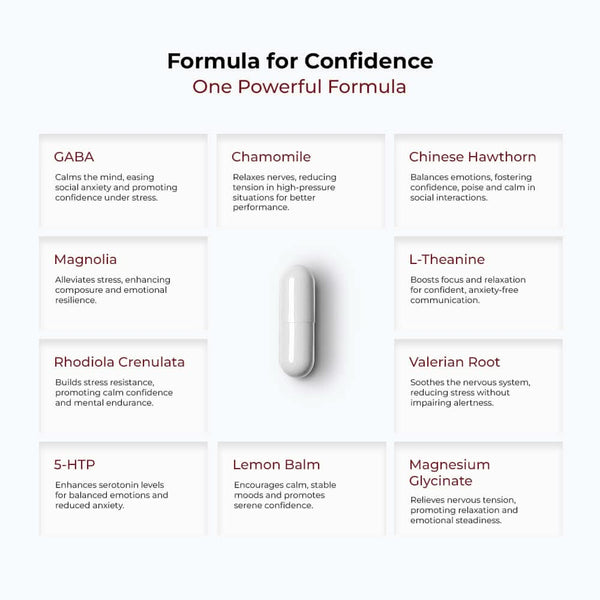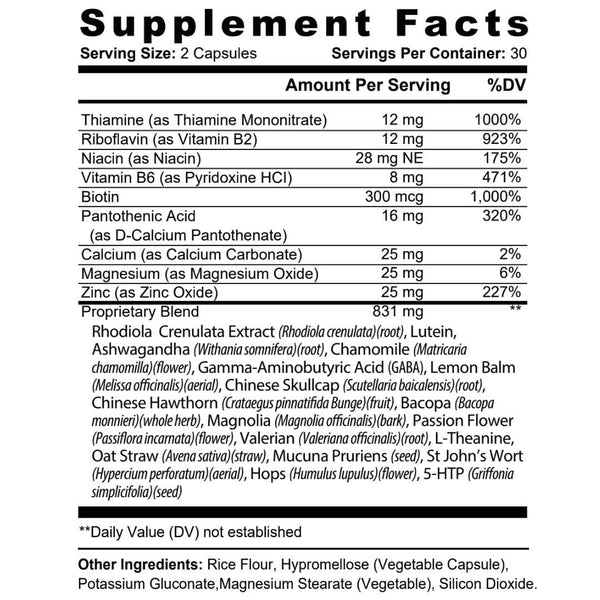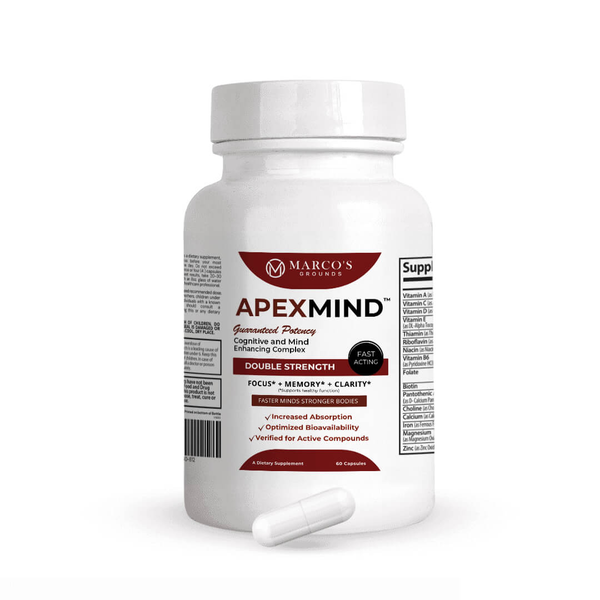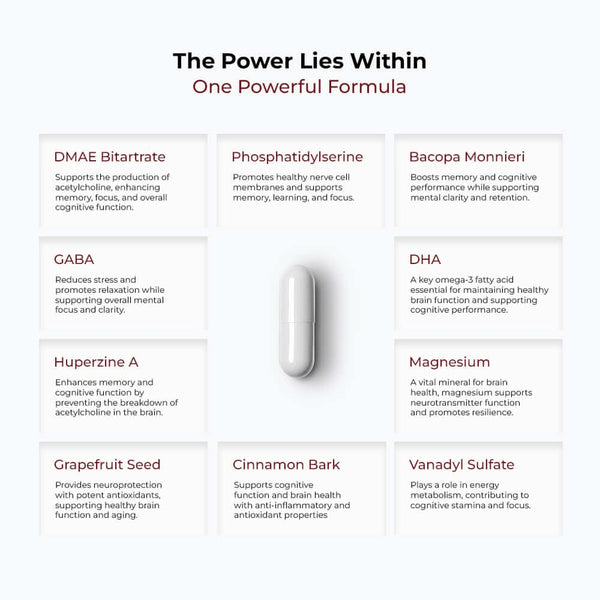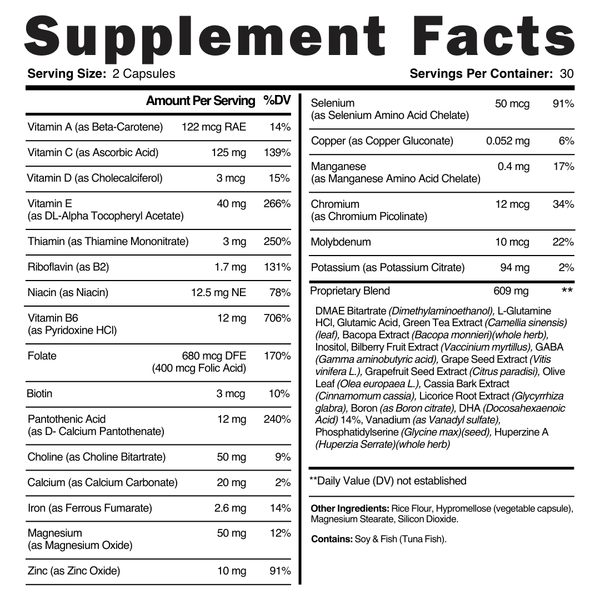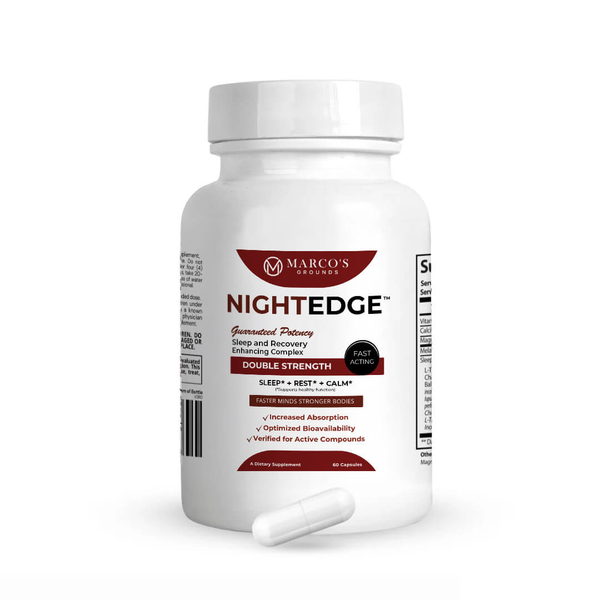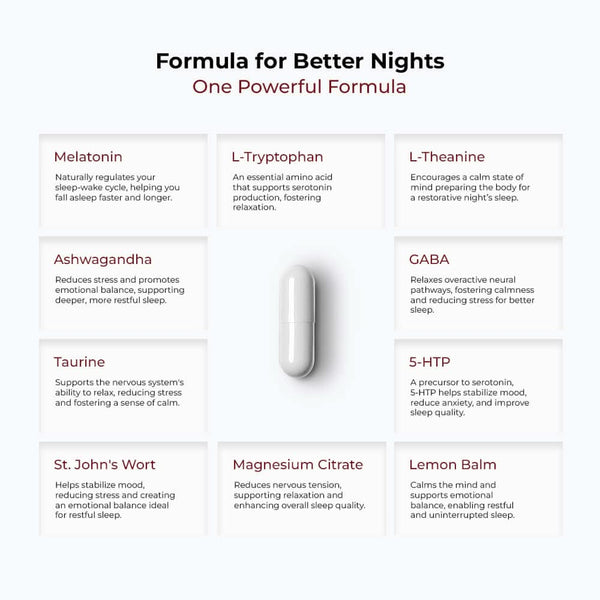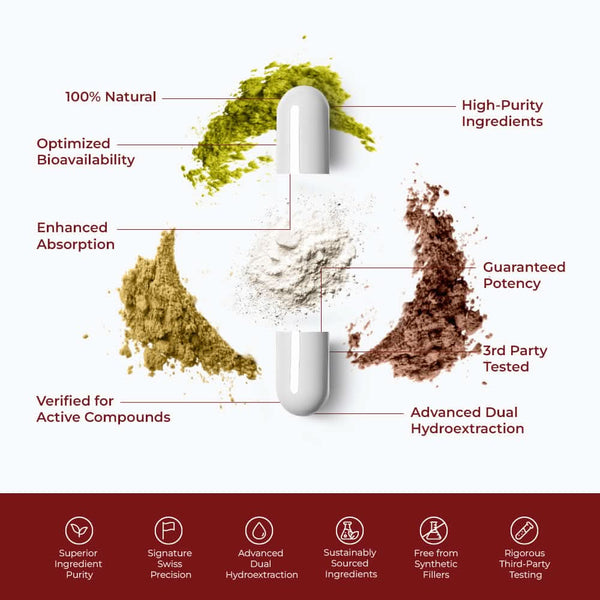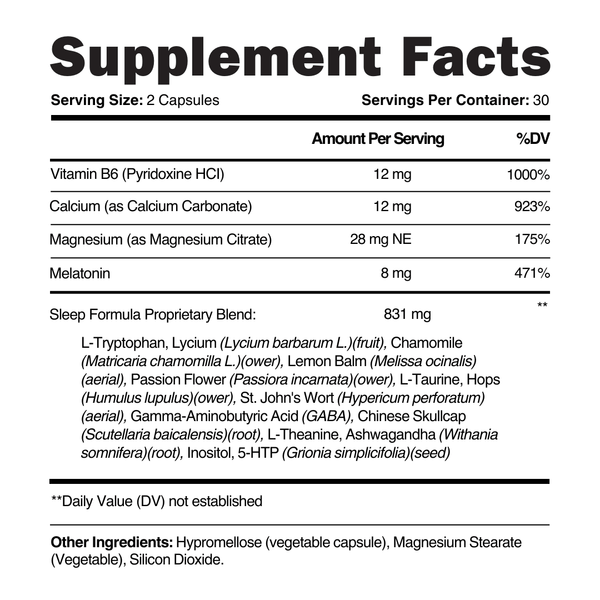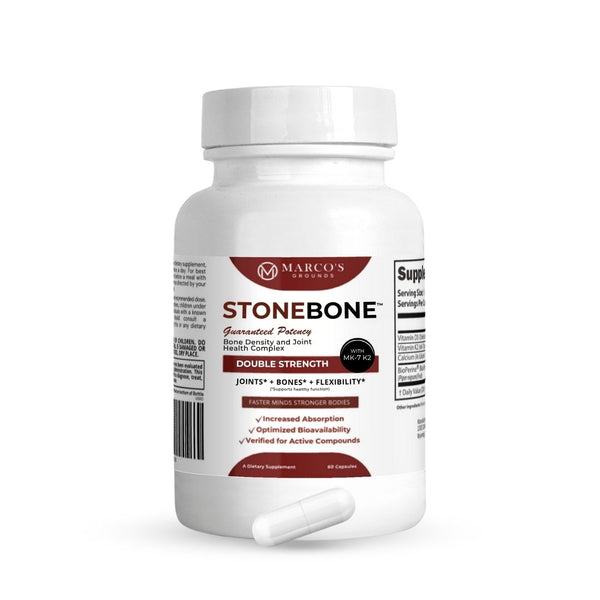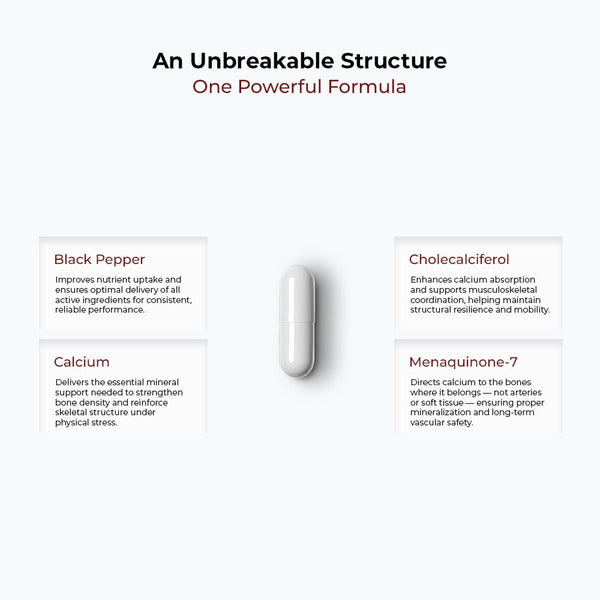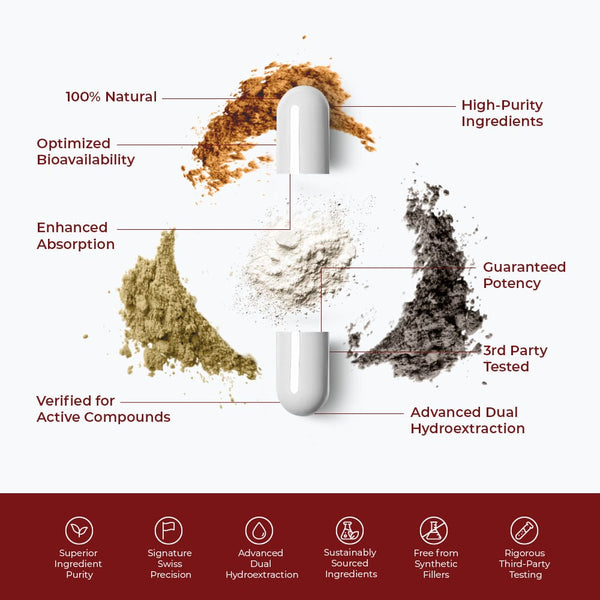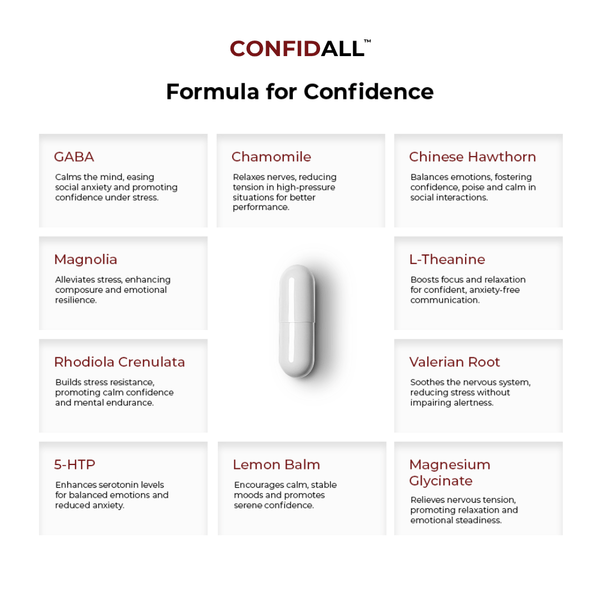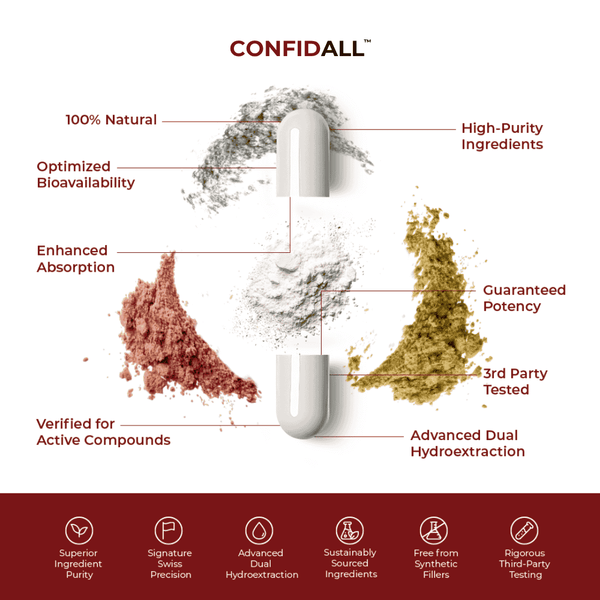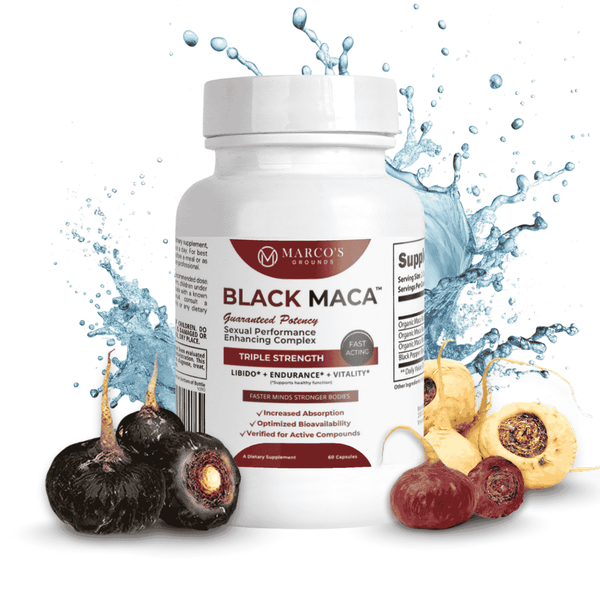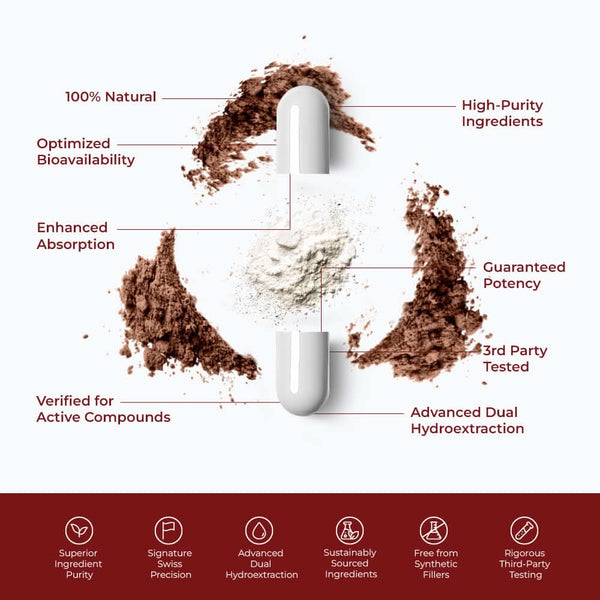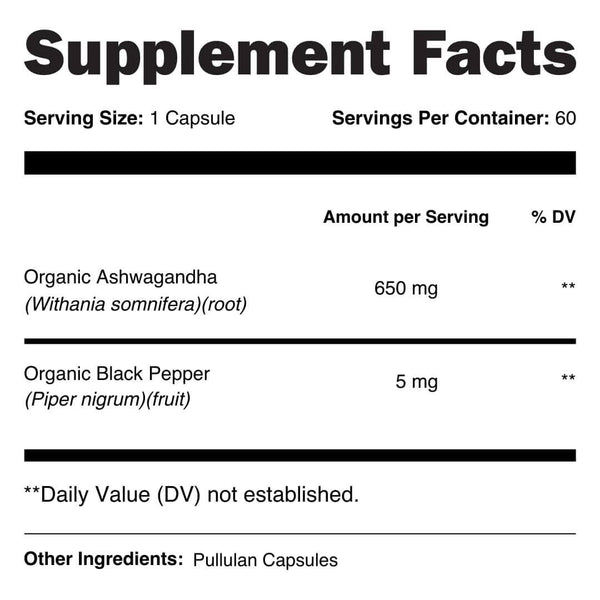Overview
Calcium is the primary mineral responsible for building and maintaining strong bones and teeth. Beyond its skeletal function, it plays an essential role in nerve transmission, muscle contraction, vascular function, and hormone signaling. For high-impact achievers, calcium is foundational for long-term strength, recovery, and physical performance.
Other Common Names
- Calcium Citrate
- Calcium Carbonate
- Ionic Calcium
- Elemental Calcium
Top Benefits
- Strengthens bones and joints
- Promotes muscle relaxation
- Supports calm nerve and heart function
- Enhances mineral absorption and recovery
What Is Calcium?
Calcium is the most abundant mineral in the body. About 99% is stored in bones and teeth, where it provides structural integrity and hardness. The remaining 1% circulates in the bloodstream and facilitates essential biological functions such as nerve conduction, muscle movement, enzyme activity, and pH balance.
Athletes, active individuals, and those under high physical stress often experience calcium depletion through sweat and bone remodeling. Without adequate intake, the body begins pulling calcium from bones, weakening them over time. This makes strategic calcium supplementation essential for maintaining strength and preventing injury.
While dairy is the most well-known dietary source, bioavailability from food varies. Supplemental calcium, especially when combined with cofactors like vitamin D3, magnesium, and vitamin K2, ensures optimal absorption and effective delivery to the bones.
Marco’s Grounds™ Calcium Sourcing
At Marco’s Grounds™, our calcium is sourced from a family-owned marine mineral operation off the pristine coasts of Iceland, where cold, mineral-rich waters yield naturally occurring marine limestone with exceptional purity.
Harvested with sustainable practices and cold-processed to preserve its integrity, our calcium is delivered in citrate form, known for superior absorption and digestive ease compared to carbonate-based alternatives.
Every batch is rigorously tested for heavy metals, contaminants, and potency, ensuring clean, high-impact skeletal support you can rely on daily.
Calcium Dosing Principles and Rationale
Calcium supplementation is most effective when taken in split doses of 300–600 mg per serving, ideally with meals to enhance absorption. Research suggests that intakes above 1000 mg daily offer diminishing returns without proper co-nutrients like D3 and K2.
Marco’s Grounds™ uses a synergistic matrix of calcium, magnesium, and fat-soluble vitamins to support ideal mineral balance and prevent calcium misdirection. StoneBone™ delivers clinically aligned dosages that fuel strength without compromising cardiovascular integrity.
Calcium Key Mechanisms
1. Bone Mineralization
- Combines with phosphate to form hydroxyapatite — the rigid structure of bones and teeth [1]
2. Neuromuscular Function
- Facilitates electrical signaling between nerves and muscles, enabling contraction and coordination [2].
3. Enzyme and Hormone Activation
- Acts as a secondary messenger in pathways governing metabolism, cell growth, and hormonal balance [3].
4. Vascular and Cardiac Health
- Regulates blood vessel constriction and contributes to healthy heart rhythm [4].
5. Structural Recovery and Adaptation
- Supports the rebuilding of bone matrix and connective tissue, especially under high physical strain [5].
Synergies with Other Marco’s Grounds™ Ingredients
- Magnesium Glycinate – Balances calcium’s action in muscle tissue and enhances bone formation
- Vitamin D3 – Increases intestinal absorption of calcium and directs it to skeletal tissue
- Vitamin K2 (MK-7) – Guides calcium into bones while keeping arteries clear
References
- Heaney, R. P. (2001). Bone health and calcium: Mechanisms of action. Nutrition Today, 36(5), 234–239.
- Berridge, M. J., et al. (2000). Calcium, a life and death signal. Nature, 395(6703), 645–648.
- Clapham, D. E. (2007). Calcium signaling. Cell, 131(6), 1047–1058.
- Ghosh, S., & Greenberg, J. A. (2015). Calcium and cardiovascular disease. Circulation Research, 116(10), 1734–1746.
- Bonjour, J. P., et al. (2009). Nutritional aspects of hip fractures. Bone, 44(2), 271–277



